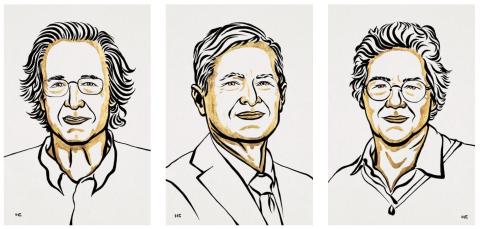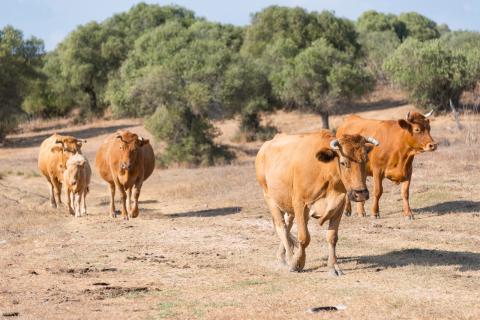Spanish National Research Council (CSIC)
If you are the contact person for this centre and you wish to make any changes, please contact us.
'Ramón y Cajal' postdoctoral researcher at the Biologial Mission of Galicia and head of the ECOP research group – Landscape Ecology
Senior Scientist at the Spanish Institute of Oceanography, IEO-CSIC
Virologist (senior scientist) at the Animal Health Research Centre (CISA, INIA-CSIC)
Researcher at the Instituto Cajal, CSIC
Doctor in Ecology and postdoctoral researcher at the National Museum of Natural Sciences (CSIC) in Madrid
Professor of Economics at Durham University (United Kingdom), Research Professor at the Spanish National Research Council (CSIC) and Lead Author of the International Cooperation chapter of the IPCC's AR6
Research professor at public research organisations at the CSIC Institute of History, in the Department of Archaeology and Social Processes
Researcher at the Institute of Public Goods and Policies of the CSIC (IPP-CSIC)
CSIC research professor and expert in food safety and water quality
Head of the Epidemiology and Environmental Health research group at CISA, INIA-CSIC.

The Science group of journals publishes several parts of a high-resolution atlas of human brain cells, the largest 'map' of its kind to date. It is a series of papers from an international mega-project, the Brain Research through Advancing Innovative Neurotechnologies (BRAIN) Initiative - Cell Census Network (BICCN), launched in 2017 to study brain cell types and their functions in humans, non-human primates and rodents. The data "will now allow researchers to address fundamental scientific questions about the human brain and its genetic organisation," states the introduction to the journal's special issue.

Living as a private renter is associated with faster biological ageing than owning a home, according to a study using a UK database with data available on 1,420 people. The team, whose research is published in the Journal of Epidemiology and Community Health, used DNA methylation data - chemical modifications - to measure people's biological age, and says this correlation is stronger than the association between biological ageing and unemployment, or having been a smoker. Apart from blood samples from the database, the research also used historical data from a national survey.

Early-life adversity, such as separation from the mother, can alter the neurological functioning of mice, causing some to experience panic and anxiety later in life. A study shows that these changes can be passed on for at least two generations and that inhalation of a drug, the diuretic amiloride, can reverse them. According to the authors, this treatment could be used in the future to alleviate panic disorders and related conditions in humans. The results are published in the journal Science Advances.
The Royal Swedish Academy of Sciences has awarded the Nobel Prize in Chemistry 2023 to Moungi G. Bawendi, Louis E. Brus, and Alexei I. Ekimov "for the discovery and synthesis of quantum dots." Quantum dots are tiny nanoparticles that diffuse their light from televisions and LED lights, and can also guide surgeons when removing tumor tissue, among many other applications.

The Royal Swedish Academy of Sciences has awarded the 2023 Nobel Prize in Physics to Pierre Agostini, Ferenc Krausz and Anne L'Huillier for developing "experimental methods generating attosecond light pulses". These advances made it possible to observe the motion of particles in atoms on the shortest time scale captured by humans. An attosecond is a unit of time equivalent to one trillionth of a second, roughly the time it takes light to travel the diameter of an atom.
The Karolinska Institute has awarded the Nobel Prize in Medicine or Physiology to Katalin Karikó and Drew Weissman for their groundbreaking discoveries, which have radically changed our understanding of how mRNA interacts with our immune system, and made it possible to develop vaccines at unprecedented speed during the covid-19 pandemic.

Since the first case of epizootic haemorrhagic disease (EHD) in Spain was detected in cattle in November 2022, it has spread among farms in several autonomous communities in dozens of outbreaks. The mosquito-borne disease does not affect humans, but has the potential to cause economic losses.

One of the world's most invasive species is Solenopsis invicta, an ant native to South America with a painful sting. In an article published in Current Biology, experts confirm the first official sighting of this species in Europe: 88 nests spread over five hectares near Syracuse in Sicily, Italy. The ants could soon spread across the continent, causing serious environmental, health and economic problems. The study is led by the Institute of Evolutionary Biology (IBE) of the CSIC and the UPF.

According to a new report from the Intergovernmental Science-Policy Platform on Biodiversity and Ecosystem Services (IPBES), human activities have introduced over 37,000 exotic species to regions around the world. The document highlights that more than 3,500 of these are harmful invasive exotic species that are often overlooked until it's too late.

A study in mice found "mild metabolic and neuropsychological malprogramming" in the offspring of females who, during gestation and lactation, had ingested emulsifiers, substances used to improve the texture of ultra-processed foods. The article, led by a team from IDIBAPS in Barcelona and published in PLoS Biology, states that the consumption during these periods of carboxymethylcellulose and polysorbate 80 - two common emulsifiers - diluted in water was associated with metabolic and cognitive deficits in the mouse offspring.